Garmin Vivoactive 5 Review: $300 well spent
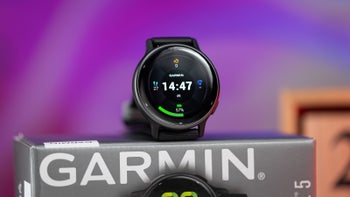
Garmin Vivoactive 5 Intro
Garmin has a huge lineup of sports watches and we understand how it might be hard to navigate this vastness, but this here Garmin Vivoactive 5 might be the one worth knowing about if you are on a tighter budget.
First, let's start with the basic facts: the Vivoactive 5 is priced at $300, it comes with a gorgeous OLED screen and four-day battery life (with Always-on screen).
It qualifies as a lifestyle watch, meaning it does not have the five-button design of specialized sports watches like the Forerunner series and it lacks the more advanced workout types.
Essentially, the Vivoactive 5 is in many ways a mini version of the $450 Garmin Venu 3, but it does not have the new Elevate sensor that the Venu 3 has, plus it lacks a barometric altimeter.
If you want a true Garmin sports watch with the five physical buttons for navigation, look at either the $250 Garmin Forerunner 165 or if you want more advanced features (like triathlon support) and a choice of two sizes, consider the Garmin Forerunner 265 series.
What’s new about the Garmin Vivoactive 5
- Gorgeous OLED screen
- Two physical buttons
- Older Elevate Gen 4 sensor (does NOT supports ECG)
- One size
- Charges with a wire
- 4-day battery life (with Always-On)
Table of Contents:
Garmin Vivoactive 5 Unboxing
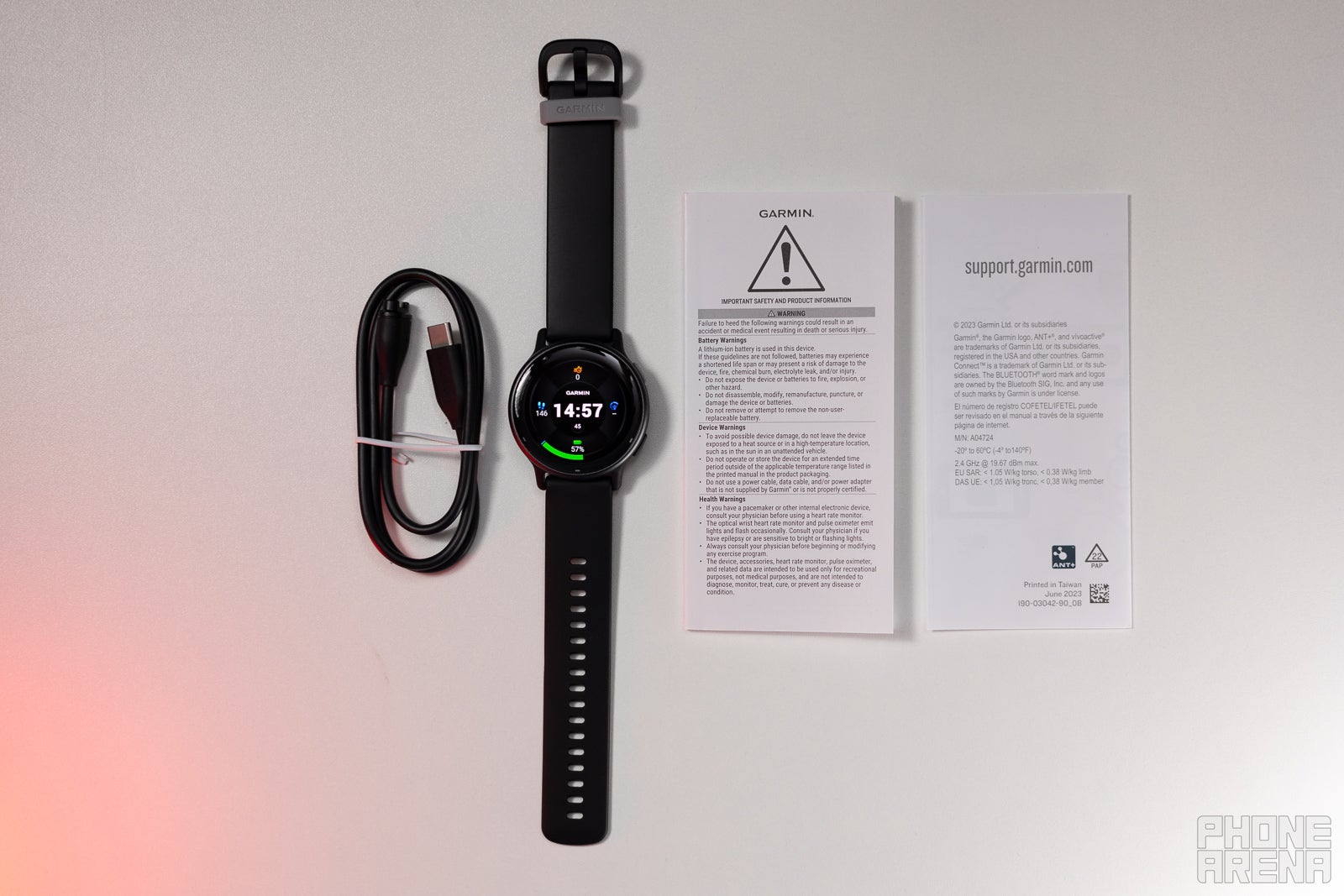
You get a very barebones package with the watch, a charging cable and a user manual (Image by PhoneArena)
The Garmin Vivoactive 5 unboxing experience is very barebones. The packaging feels kind of cheap, you get a box and inside it you have the watch with a strap already on it, then you have the proprietary Garmin charging cable (a pretty short one, with USB-C on the other end), as well as a user manual.
That's it! Garmin could really do a slightly better job with this unboxing experience and the packaging of the device.
Garmin Vivoactive 5 Specs
Before we dive deeper, here is an overview of the key Vivoactive 5 specs:
| Garmin Vivoactive 5 | Garmin Forerunner 165 |
|---|---|
| $300 price | $250 price |
| One size: 42mm | One size: 43mm |
| Two buttons | Five buttons |
| Plastic Stainless steel bezel | All Plastic |
| Elevate Gen 4 sensor | Elevate Gen 4 sensor |
| - | - |
| Single-band GPS | Single-band GPS |
| - | Altimeter |
| Body Battery Morning Report | Body Battery Morning Report |
| 11 days smartwatch mode 21 hours Venu 3 GPS mode | 11 days smartwatch mode 19 hours GPS mode |
Garmin Vivoactive 5 Design, Size and Bands
Stainless steel bezel, but a plastic body
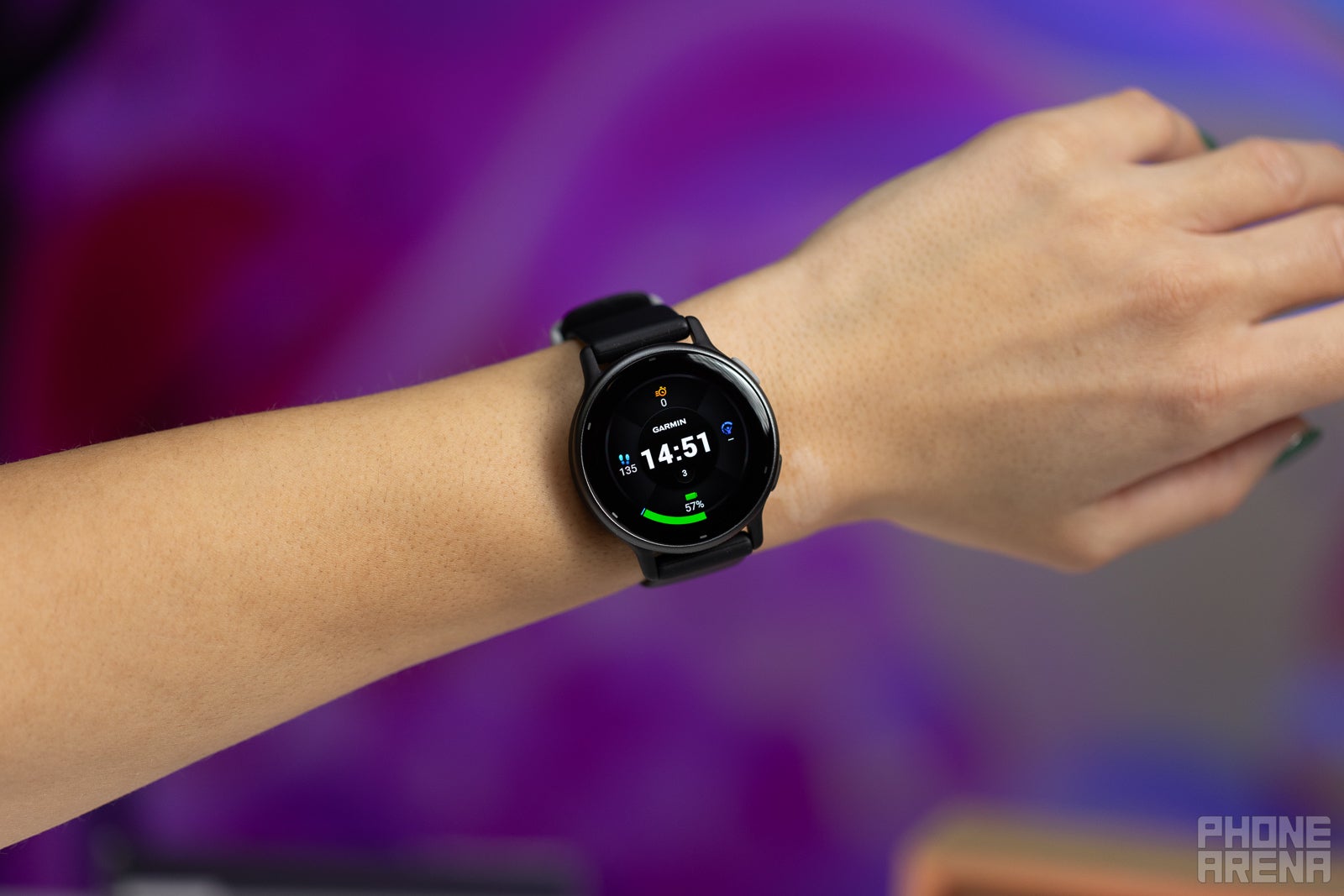
The Vivoactive 5 has an inoffensive design and a size that suits most wrist sizes except bigger ones (Image by PhoneArena)
Unlike pricier Garmin watches which typically come in two or even three sizes, the Vivoactive 5 is among the company's budget models and it is only available in one 42mm size.
This would be okay for many people, but those with an extra large wrists might prefer a larger watch. I personally have a small, 160mm wrist size and I find the Vivoactive fits perfectly.
The watch is mostly made of plastic and feels toy-ish and a bit generic. On the flip side, it is very light-weight, which is important for a watch you will be wearing 24/7.
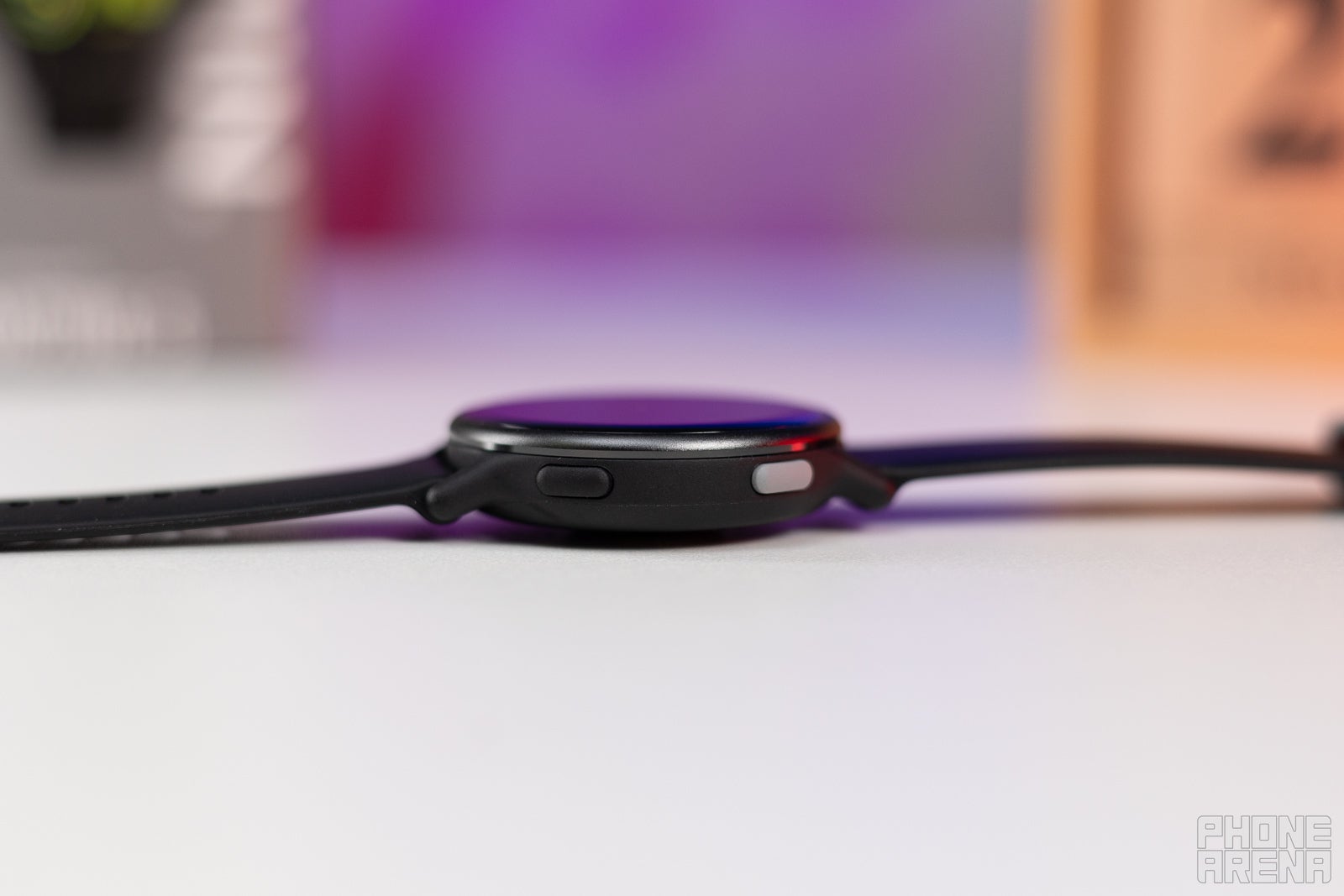
Buttons on our unit had a bit of wobble (Image by PhoneArena)
Build quality on our unit is not perfect, as the two plastic buttons on the side wobble a bit. Garmin might consider this fair game for their "budget" watch, but this is still a $300 watch, so this definitely does not sit well with us.
On the bottom side of the watch, you can find the Elevate Gen 4 sensor, which is one generation behind the newest Gen 5 sensor that you get on the Garmin Venu 3. Some tests show that the newer Gen 5 sensor is a bit more accurate with heart rate tracking and it theoretically has the hardware required for ECG, which you don't find on this here Gen 4 sensor.

The Vivoactive 5 uses 20mm bands and the one in the box is soft to touch and comfortable (Image by PhoneArena)
The silicone band included with the watch is nothing to write home about, but it is quite comfortable to wear and pleasingly soft to the touch. One disappointing detail is the plastic buckle (metal would have been nicer and more durable).
We have, however, found these unassuming Garmin watch bands to be great in the long-run as comfort is the ultimate measure of a good watch strap and they excel at that.
Garmin Vivoactive 5 Software & Features
Lots of supported workout types
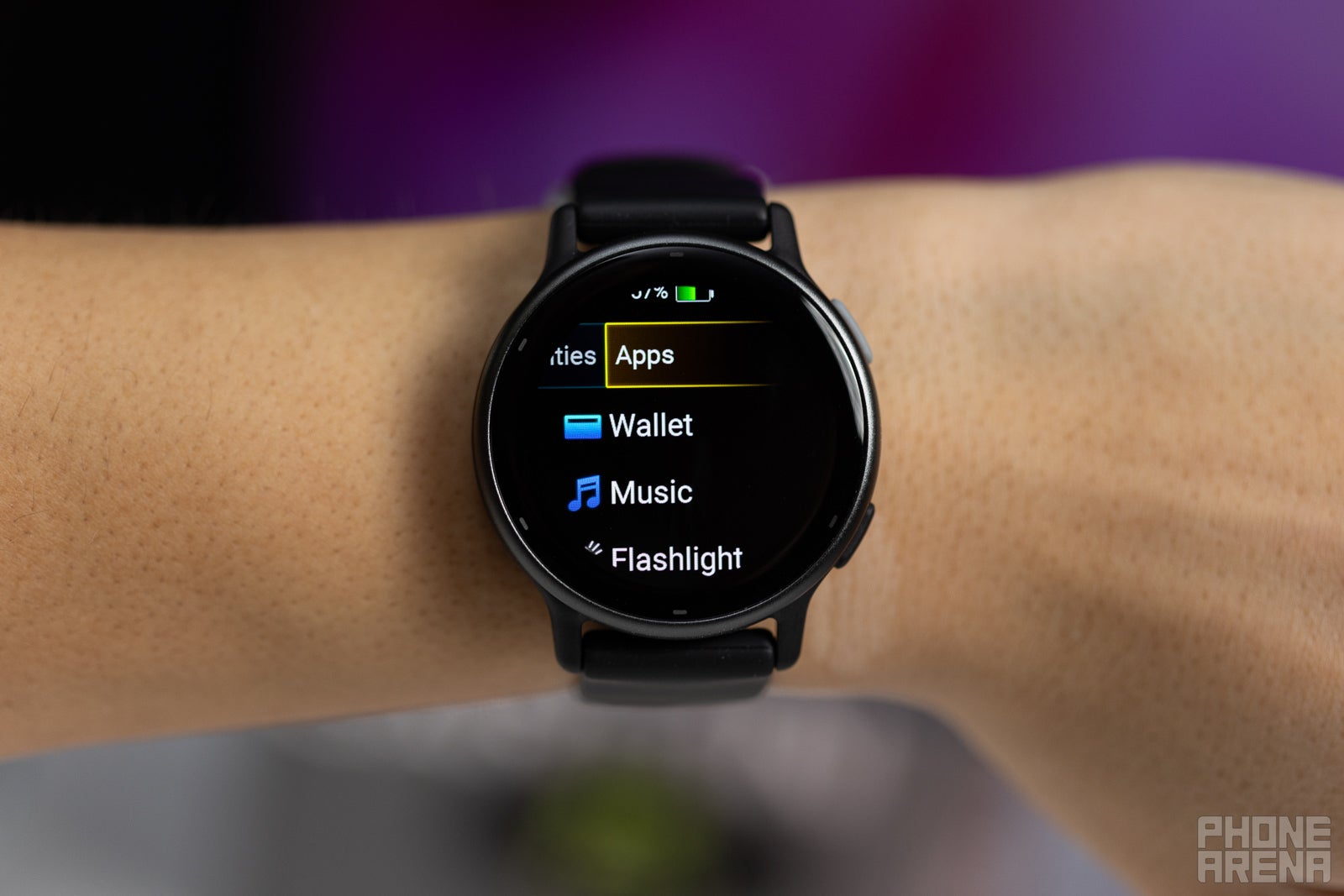
The Vivoactive 5 has smooth moves and does not lag (Image by PhoneArena)
The Vivoactive 5 might not be a sports watch in Garmin's strict definition, but weirdly, it supports a lot more workout types than the sportier Forerunner 165.
Here is a breakdown of the major workout and feature differences:
| Garmin Vivoactive 5 | Garmin Forerunner 165 |
|---|---|
| Lifestyle watch faces | Sporty watch faces |
| Separate Activities / Apps | Activities / Apps not separated |
| Wheelchair mode | - |
| - | Daily Suggested Workouts |
| - | Training Effect |
| More sports profiles: Run Bike Swim, Open Water Swim Tennis Yoga Ski, Snowboard Ebike Basketball, Soccer etc | Only basic sports profiles: Run Bike Swim, Open Water Swim Tennis Yoga etc |
| - | Running dynamics PacePro pacing strategy Race Predictor |
| - | Basic Navigation (point-to-point) |
| Supports: Chest Straps Power Meters | Supports: Chest Straps Power Meters |
We won't dive into the details and specifics of the Garmin operating system, but you can find a bit of a rant on that topic in our Garmin Venu 3 review. In short, this interface still feels outdated and not properly adjusted to touchscreen use with many missed opportunities for easier use. But once you get used to its quirks, it works.
Sports Tracking
The Vivoactive 5 is doing a good job at sports tracking, but it won't give you the detailed running stats you get on a Forerunner, nor will it prepare you for a marathon.
For other activities, though, it's better.
I ride an eBike and if you just use the Garmin Bike workout profile, you get wildly inaccurate heart rate readings, so you need to use the proper Ebike workout type. That is missing on the Forerunner 165, but is available on this here Vivoactive 5.
You can find a few other such activities like Ski and Snowboard, which are not available on that similarly priced Forerunner 165 watch.
The one big omission here is the barometric altimeter, so you won't get a floors climbed metric, which can be quite useful for some sports.
Sleep tracking and nap detection
Good news is that you have all the Garmin Sleep and Nap detection features on board here.
We found the Vivoactive 5 was mostly accurate with the time you fell asleep and the time you woke up, which are the most important metrics. It also gives you a breakdown of sleep stages. And it has the Sleep Score which is a quite useful metric to give you a quick estimate of your sleep quality.
All of that data is intertwined with Garmin's Body Battery score, and also takes into account your HRV, a key metric that indicates your wellness.
Heart Rate
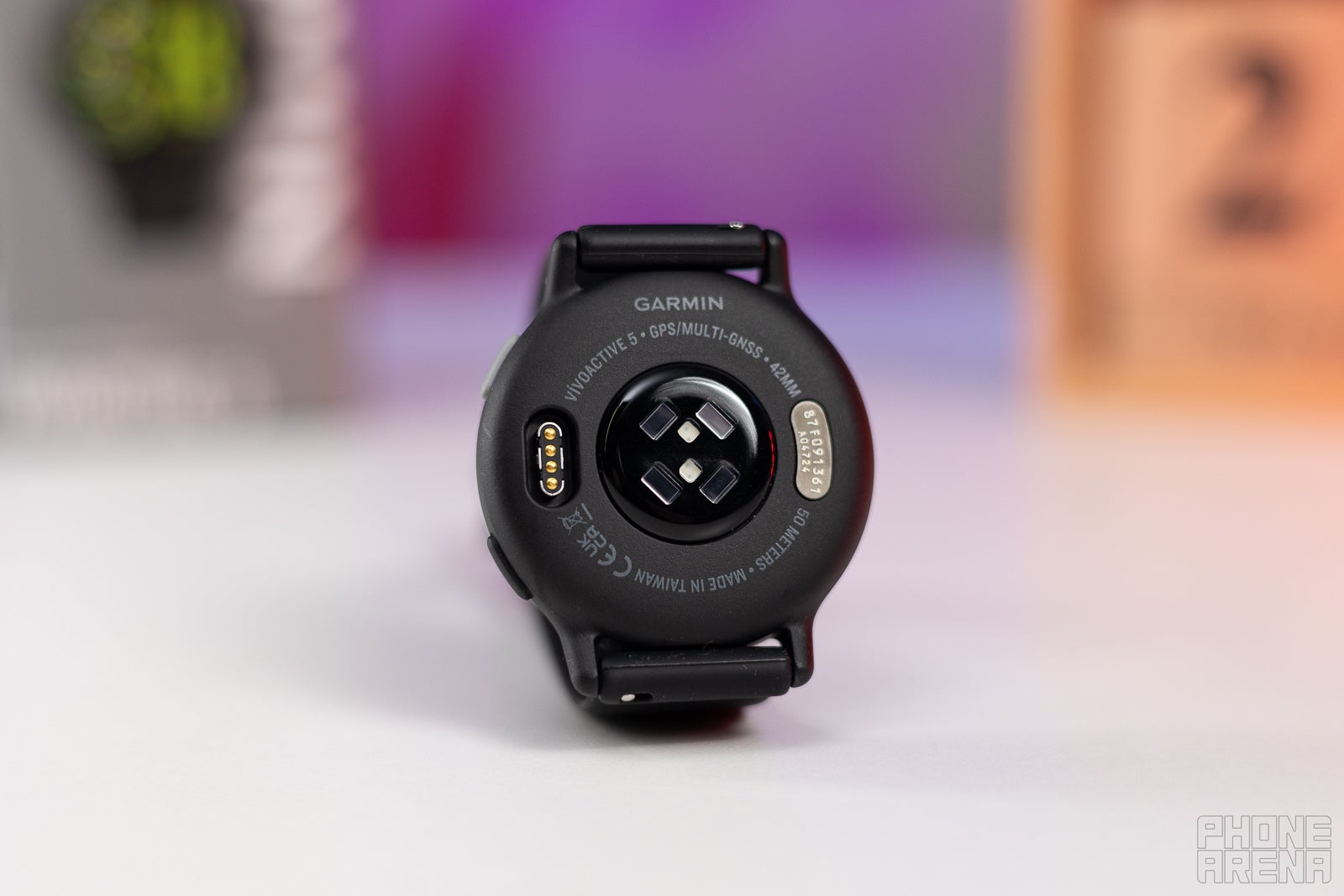
You have the older Elevate Gen 4 sensor on this watch (Image by PhoneArena)
Is the Garmin Vivoactive 5 a flawless heart rate tracker?
Certainly not, but it is good enough to be useful.
Competitive athletes will certainly prefer a chest strap for more accurate heart rate tracking, and you can connect a chest strap and a power meter to the Vivoactive 5.
On its own, however, the accuracy is on par with other Garmins that use this same Elevate Gen4 heart rate sensor, which is to say quite good, but not the best (the most accurate heart rate sensor on a smartwatch is the one on the Apple Watch by far).
Garmin Vivoactive 5 Battery and Charging
Don't worry if you forgot your charger on a weekend trip
In terms of battery life, the Vivoactive 5 delivers around four days on average if you have the screen always on, as per our experience with the watch.
If you turn it off, Garmin says you can get up to 11 days. We have not tested those claims, but Garmin usually provides an accurate estimate, so we have no reason to doubt them.
Even those four days are good enough for us, though!
Not having to charge your watch daily is a great convenience and we were happy to have one less gadget's battery to worry about with the Vivoactive 5.
Garmin Vivoactive 5 Summary: Should you buy it?
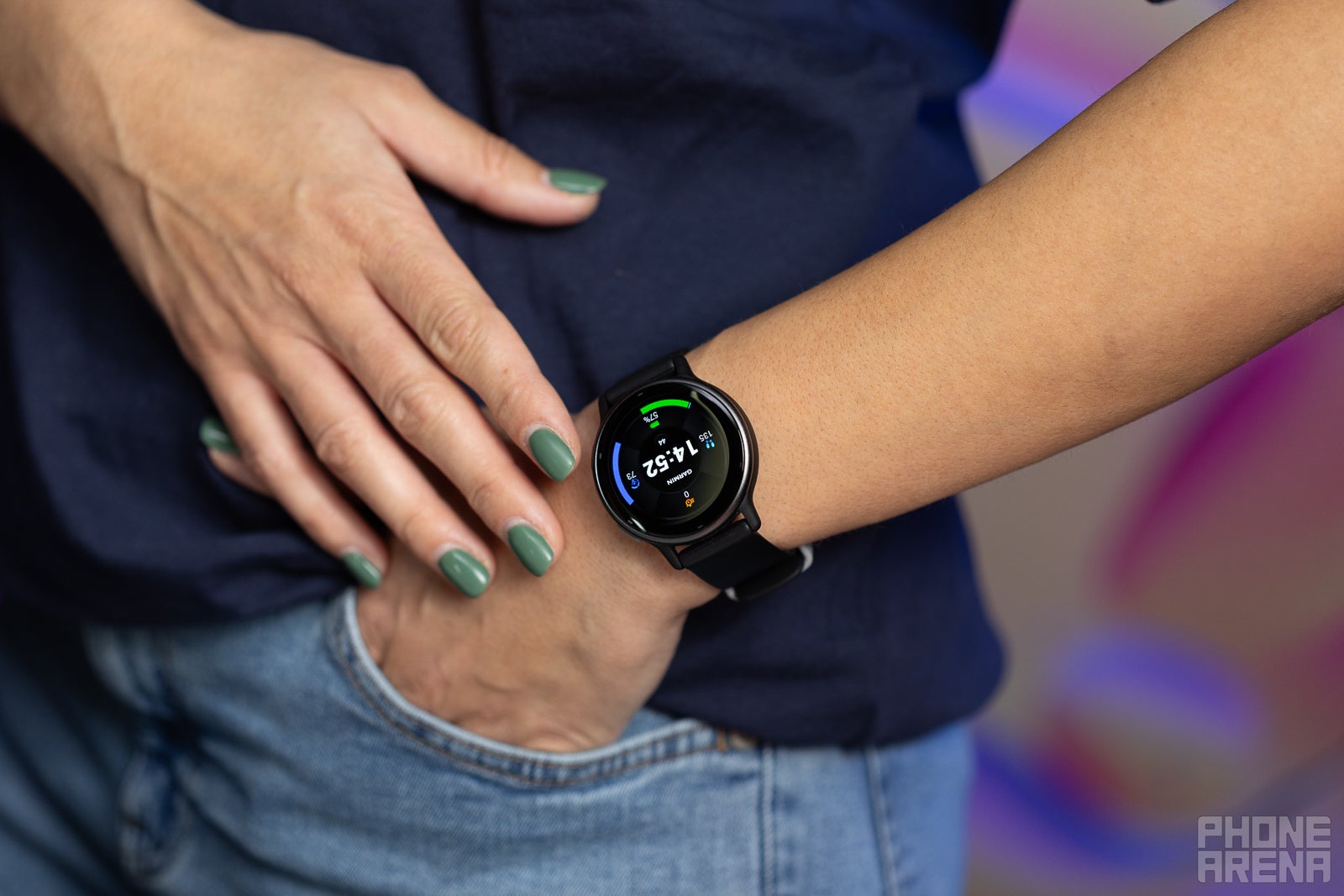
The Vivoactive 5 is one of many Garmin watches, but it might be the best affordable one (Image by PhoneArena)
The Vivoactive 5 is a fine Garmin watch at a reasonable price.
Its big selling point is clearly the long battery life on a watch with an OLED screen. An average of four days of battery life far exceeds what you get on an Apple Watch or a Galaxy Watch (those you typically recharge every day, except for the giant Apple Watch Ultra model).
If you are sold on that promise, you are sold on a Garmin watch.
But should you go for the Vivoactive 5 or instead pick the more sporty Forerunner 165? Garmin does not make the choice easy as there are numerous smaller features that differ on these two watches for no logical reason. However, the gist of it is the following: the Vivoactive 5 is more of a lifestyle watch, while the Forerunner 165 gives you more detailed running and cycling stats, and a five-button design for easier use during activities.
Are you getting a Garmin watch soon? What is the one feature that you are most excited about?










Things that are NOT allowed: